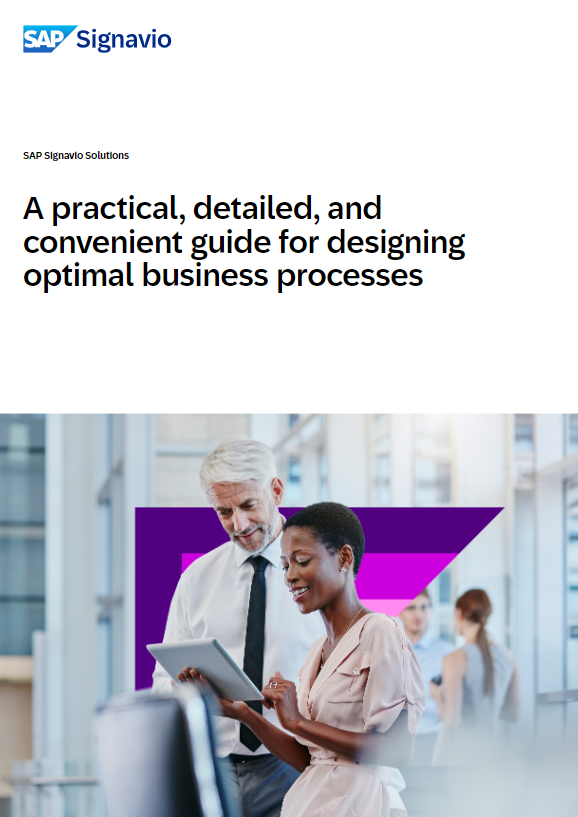Business Process Management Team
A business process management (BPM) team unites leaders, analysts, and automation experts to align operations with strategy. See how these teams drive transformation.

A business process management (BPM) team unites leaders, analysts, and automation experts to align operations with strategy. See how these teams drive transformation.
A business process management (BPM) team—sometimes called a process excellence team, operational excellence team, or business process office—is the group responsible for aligning day-to-day operations with business strategy.
Within business process management, the team provides structure, governance, and expertise to ensure that processes are efficient, compliant, and scalable.
Unlike individual roles such as analysts or owners, the BPM team brings together multiple disciplines.
From mapping and analyzing workflows to implementing automation and driving transformation, these teams make sure that processes not only look good on paper but also deliver measurable outcomes in practice.
A BPM team exists to ensure that processes are not only documented but also improved, governed, and scaled.
Unlike individual roles, the team covers the full process lifecycle—from discovery to optimization—working across business units to align operations with strategy.
At a strategic level, BPM teams define how process management works across the organization. They create the guardrails for how processes are discovered, designed, improved, and governed.
Some teams also support regulatory compliance, process audits, and digital transformation programs. Their effectiveness depends not just on tools, but on cross-functional collaboration, strategic prioritization, and strong governance.
In daily operations, BPM teams act as facilitators and connectors. They translate strategic direction into practical improvements that employees can use.
This day-to-day work ensures that process improvements don’t just stay theoretical, but translate into meaningful change in business units.
BPM teams are judged by the tangible outputs they produce, which become reference points for governance and decision-making.
By combining these deliverables with ongoing responsibilities and daily engagement, BPM teams act as the engine room of process excellence in modern enterprises.
Not every organization starts with a dedicated BPM team—but nearly all growing or transforming enterprises reach a point where it’s no longer optional.
A centralized or distributed process team becomes necessary when process ownership, performance, and change management require full-time accountability.
A BPM team ensures that process management evolves from being an occasional project into a strategic capability.
While individual roles can drive isolated improvements, only a dedicated team provides the accountability and consistency needed to sustain change.
Common triggers include:
Scope of involvement:
BPM teams often expand their mandate beyond efficiency alone, taking ownership for:
Outcome:
The presence of a BPM team ensures that process management is not dependent on individuals, but is embedded as a repeatable, strategic capability that scales with the organization.
→ Related: BPM solutions: The evolution of business process management
A BPM team works best when it combines different perspectives: strategic leadership, process accountability, analytical skills, technical expertise, and change management.
While exact structures vary, most organizations build their team around a mix of the following categories of roles:
Every BPM team needs senior leaders who provide strategic alignment, resources, and authority. Without executive backing, process initiatives often stall at the departmental level. Sponsors set the mandate, ensure funding, and make process excellence a leadership priority.
These roles create the bridge between strategy and execution. They are responsible for owning processes, standardizing methods, and maintaining governance frameworks. Without them, improvements may be designed but fail to stick.
Analysts and specialists provide the fact base for decision-making. They map processes, analyze data, and uncover inefficiencies that leaders can act on. Their insights are critical for both strategic programs and day-to-day operations.
These roles turn process designs into reality. They ensure automations, integrations, and system changes are technically sound and sustainable. Without them, BPM risks staying theoretical rather than operational.
Domain experts ensure that processes are grounded in real business needs. They validate proposed changes and bring practical knowledge from their functional areas, preventing BPM from becoming detached from operations.
Even the best-designed processes fail without adoption. Support roles ensure that change is communicated, understood, and sustained across the organization. They focus on people, training, and execution discipline.
In practice, not every organization will staff all of these roles. Smaller firms may combine responsibilities, while large enterprises often formalize them in a Process Excellence Center of Excellence (CoE).
What matters is that the team collectively covers strategy, governance, analysis, implementation, and adoption to make BPM a sustainable capability.
The way a BPM team is structured shapes how effectively process management can scale across the organization. Structure determines who owns process decisions, how governance is enforced, and how much flexibility business units have.
While there’s no single model that fits all, most organizations align to one of four main structures.
All process expertise sits in a single team (often a Center of Excellence or Process Office) that sets methods, governs tools, and drives initiatives across the company.
Strengths
Challenges
Best used when
Process specialists are embedded in business units, but connected through a central governance framework. Each unit runs its own process improvements while following company-wide standards.
Strengths
Challenges
Best used when
Combines the control of a central team with the flexibility of distributed experts. The central group owns governance, standards, and enterprise-wide tools, while business units execute local improvements.
Strengths
Challenges
Best used when
Temporary, cross-functional teams formed to deliver specific projects or transformation programs (e.g., ERP rollouts, automation initiatives, compliance audits). They disband once goals are achieved.
Strengths
Challenges
Best used when
Most organizations don’t stick to a single model forever. They often start centralized, move to hybrid as they mature, and eventually embed federated experts once process accountability is part of business culture. Agile squads can supplement any model for urgent, high-priority projects.

BPM teams rely on technology to make their work repeatable, transparent, and scalable. Without a consistent toolset, process documentation becomes fragmented, improvements are hard to track, and governance quickly breaks down.
While the exact stack varies by organization, most mature BPM teams draw on five main categories of tools.
Teams need a central repository where processes can be captured, standardized, and governed. Modeling platforms support notations like BPMN, enforce version control, and provide approval workflows.
System data reveals how processes actually run, often differing from what is documented. Process mining and analysis tools help teams validate compliance, find bottlenecks, and measure the effect of improvements.
BPM requires broad buy-in, not just documentation. Collaboration platforms make processes accessible, allow feedback cycles, and engage stakeholders across departments.
Improvements must move from diagrams into day-to-day operations. Automation platforms handle repetitive tasks, orchestrate workflows, and connect systems through integrations.
Process work cannot exist in isolation from IT. Teams need to connect process change to applications, technologies, and transformation roadmaps to avoid duplication and technical debt.
Together, these platforms give BPM teams the ability to design processes, analyze performance, govern compliance, drive automation, and align with enterprise architecture—all within a connected ecosystem.
Creating a dedicated BPM team is a turning point for many organizations. It signals that process improvement is no longer an ad-hoc effort but a strategic capability with its own mandate, roles, and governance.
Building the team requires balancing executive sponsorship, the right mix of skills, and scalable tooling.
Anchor the team to a business reason, not a generic “process excellence” slogan. The mandate should say why now, for whom, and to what measurable end (e.g., S/4HANA readiness, compliance, cost-to-serve, CX).
A BPM team succeeds when a senior leader clears paths, funds the work, and enforces standards across silos. The COO is the natural sponsor, often with the CIO/CTO or a transformation leader alongside.
You need a leader who is credible with the business and fluent in change. Titles vary (COO, Head of Business Process Excellence, Transformation Lead), but the job is the same: convert strategy into an executable portfolio.
Balance accountability, analysis, build, and adoption. Blend centralized expertise with embedded partners in key functions.
You already know the categories (modeling, mining, collaboration, automation, architecture). The selection conversation should be about fit and future, not feature checklists.
Name the stack (Examples: SAP Signavio Process Transformation Suite, SAP Build Process Automation on SAP BTP, SAP LeanIX.) you’ll standardize on and evaluate against these criteria:
Prove value quickly on a high-impact, high-visibility process, then templatize. Convert wins into standards (playbooks, reference models, automation patterns).
Stand up the team with a clear mandate, real sponsorship, a leader who can arbitrate priorities, a balanced skill mix, and an integrated platform strategy (Signavio + Build on BTP + LeanIX). Win fast on one process, then scale by standardizing what worked.
BPM teams are becoming central to how organizations adapt and transform. Their role now goes beyond documentation into governance, automation, and AI readiness, ensuring processes deliver measurable outcomes.
As part of the broader process lifecycle, BPM teams will remain the glue between business and IT—turning strategy into execution and building the resilience needed for long-term success.
Get the most important standards, ready for you to modify and adapt according to your own standards and organizational needs.

